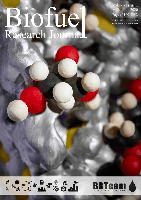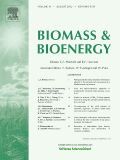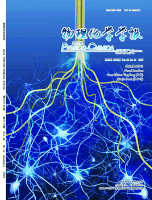
Biomass Conversion and Biorefinery
Scope & Guideline
Empowering innovation in renewable energy and biorefinery technologies.
Introduction
Aims and Scopes
- Biomass Conversion Technologies:
The journal covers various methods for converting biomass into biofuels, biochemicals, and other value-added products, including thermochemical, biochemical, and physical processes. - Sustainable Waste Management:
Research on the utilization of agricultural and industrial waste for bioenergy production, focusing on waste valorization and sustainable practices. - Biorefinery Approaches:
Exploration of integrated biorefinery systems that convert biomass into multiple products, enhancing resource efficiency and reducing waste. - Environmental Impact Assessments:
Studies on the environmental effects of biomass conversion processes, including life cycle assessments and sustainability evaluations. - Innovative Biomaterials:
Development and characterization of biobased materials for various applications, including packaging, construction, and environmental remediation.
Trending and Emerging
- Advanced Nanotechnology Applications:
There is a growing trend in utilizing nanotechnology for enhancing biomass conversion efficiencies, including the development of nanocatalysts and nanocomposites for various applications. - Circular Economy Initiatives:
Research focusing on circular economy approaches, such as waste-to-energy systems and the valorization of by-products, is increasingly prominent. - Microbial and Enzymatic Processes:
The use of microbial and enzymatic processes for biomass conversion and waste treatment is gaining traction, reflecting a shift towards more sustainable methods. - Biochar Utilization:
There is a significant increase in studies regarding the production and application of biochar for soil improvement, water remediation, and carbon sequestration. - Integrated Biorefinery Systems:
Emerging interest in integrated biorefinery systems that optimize the conversion of various biomass feedstocks into a range of products.
Declining or Waning
- Traditional Biomass Fuels:
Research on conventional biomass fuels like wood and straw has seen a decline as the focus shifts towards more innovative and sustainable biomass sources. - Basic Biodegradation Studies:
Papers solely focused on basic biodegradation processes without integration into biorefinery concepts are becoming less prevalent. - Single-Product Focus:
Studies concentrating on the production of a single product from biomass are waning, as the trend moves towards multi-product biorefinery systems. - Conventional Chemical Processing:
Research emphasizing traditional chemical processes for biomass conversion is declining in favor of greener, enzymatic, or catalytic methods.
Similar Journals

Biofuels Bioproducts & Biorefining-Biofpr
Empowering Sustainability Through Cutting-Edge Biorefining ResearchBiofuels Bioproducts & Biorefining (Biofpr), published by WILEY, stands at the forefront of research dedicated to the sustainable production and utilization of biofuels and bioproducts. With its robust impact, as evidenced by its placement in the Q2 quartile across both Bioengineering and Renewable Energy, Sustainability and the Environment categories, this journal provides a vital platform for disseminating high-quality research aimed at advancing bio-refining technologies and bio-product innovations. Covering a wide range of topics from production methodologies to environmental impacts, Biofpr serves as an essential resource for researchers, professionals, and students eager to contribute to the evolving领域 of renewable energy solutions. Its consistent performance in the Scopus rankings further underscores its importance, ranking #78 in Renewable Energy and #51 in Chemical Engineering, making it an indispensable read for those committed to sustainability and scientific advancement in the biofuels sector.

Journal of Bioresources and Bioproducts
Harnessing bioresources for sustainable development.Journal of Bioresources and Bioproducts, published by KEAI PUBLISHING LTD, is a premier open-access journal that has been at the forefront of research in biochemistry, biomaterials, forestry, materials chemistry, and organic chemistry since its inception in 2016. With an impressive impact factor and significant rankings in multiple categories—most notably, being positioned in the 99th percentile in several fields including Agricultural and Biological Sciences, Biochemistry, and Materials Science—this journal facilitates the rapid dissemination of innovative findings and techniques within these critical domains. The journal’s broad scope encompasses various aspects of bioresource utilization and bioproduct development, making it an essential resource for researchers, industry professionals, and students alike. The Journal of Bioresources and Bioproducts aims to promote scientific dialogue and shares pivotal insights that can spur advancements in sustainable practices and ecological conservation across different sectors.

Korean Chemical Engineering Research
Connecting Scholars to the Future of Chemical EngineeringKorean Chemical Engineering Research, published by the Korean Institute of Chemical Engineers, serves as a vital resource for those engaged in the expansive field of chemical engineering. With an ISSN of 0304-128X and an E-ISSN of 2233-9558, the journal offers a platform for scholarly articles that cover various aspects of chemical processes, innovative technologies, and sustainability practices in engineering. Despite being in the Q4 category of chemical engineering journals as per the 2023 rankings, the journal's focus on emerging research from South Korea and beyond presents unique insights valuable to professionals, researchers, and students alike. Operating under effective citation metrics, it finds its place within Scopus, ranking at 229 out of 273, indicating a niche yet specialized contribution to the broader scientific community. We invite you to explore this integral journal, which is committed to fostering discourse and development in chemical engineering through its extensive archive, dating back to 2014 and continuing to evolve through 2023.

Biofuel Research Journal-BRJ
Fueling knowledge for a sustainable energy landscape.Biofuel Research Journal (BRJ) is a premier open-access publication that has been at the forefront of advancing knowledge in the field of biofuels since its inception in 2014. Published by Alpha Creation Enterprise in Malaysia, BRJ disseminates high-quality research that spans multiple disciplines, including Biotechnology, Chemical Engineering, and Environmental Science. With an impressive Q1 ranking across various categories in 2023 and a robust Scopus ranking positioning it among the top journals in its field, BRJ is dedicated to promoting innovative solutions that address contemporary energy challenges. The journal serves as a vital resource for researchers, professionals, and students engaged in sustainable energy, offering a platform for sharing cutting-edge findings and fostering interdisciplinary collaboration. With its commitment to open access, BRJ ensures that its content is widely available, supporting the global pursuit of renewable energy and environmental stewardship.

BIOMASS & BIOENERGY
Leading the Charge in Sustainable PracticesBIOMASS & BIOENERGY, published by Pergamon-Elsevier Science Ltd, is a premier academic journal focusing on the interdisciplinary fields of biomass and bioenergy research. With its impressive impact reflected in its 2023 Q1 rankings across multiple categories, including Agronomy and Crop Science, Forestry, Waste Management and Disposal, and a solid Q2 in Renewable Energy, Sustainability and the Environment, this journal stands at the forefront of advancing knowledge in renewable resources and sustainable practices. Established in 1991, it serves as a vital platform for researchers, professionals, and students to disseminate groundbreaking studies and innovative findings that shape the future of renewable energy. Though it does not currently offer open access, the journal's high ranking on Scopus, particularly its 95th percentile rank in key agricultural and environmental science categories, underscores its significance in promoting critical discourse and scientific advancements in biomass utilization and energy generation.

Algal Research-Biomass Biofuels and Bioproducts
Harnessing algae for a sustainable future.Algal Research - Biomass Biofuels and Bioproducts is a prestigious academic journal published by Elsevier, dedicated to advancing the field of algal biotechnology and its applications in biomass, biofuels, and bioproducts. With an ISSN of 2211-9264 and a notable impact factor, this journal is recognized as a leading source of innovative research, boasting a current Scopus rank of #31 out of 406 in the domain of Agricultural and Biological Sciences, specifically Agronomy and Crop Science, positioning it in the top 8% of its field (92nd percentile). This open-access publication, established in 2012 and covering literature up to 2024, prioritizes disseminating high-quality research that fosters sustainable solutions for energy and bioproducts derived from algal resources. As a Q1 ranked journal in the 2023 Agronomy and Crop Science category, it serves as a vital resource for researchers, professionals, and students seeking to understand and leverage the potential of algae within the biodiverse framework of bioeconomy and sustainable practices.

APPLIED CATALYSIS A-GENERAL
Transforming Ideas into Catalytic Solutions.Applied Catalysis A-General is a premier journal published by Elsevier that serves as a vital resource in the fields of catalysis, process chemistry, and technology. Founded in 1991, this esteemed journal has garnered considerable recognition, reflected in its classification in the Q2 quartile for both catalysis and process chemistry in 2023, as well as its notable rankings within the Scopus database, placing it among the top 20 journals in related disciplines. With an ISSN of 0926-860X and an E-ISSN of 1873-3875, the journal provides a platform for researchers and professionals to disseminate cutting-edge research findings, facilitate knowledge transfer, and foster innovation in the field. While not an open-access journal, it remains accessible through institutional subscriptions, ensuring that critical findings reach a broad audience. The journal's objectives include advancing the understanding of catalytic processes and their applications, making it an indispensable tool for those engaged in this dynamic area of study. Applied Catalysis A-General continues to play a vital role in shaping the future of catalysis, contributing to both scientific progression and practical advancements in various industries.

ACTA PHYSICO-CHIMICA SINICA
Pioneering insights in Physical and Theoretical Chemistry.ACTA PHYSICO-CHIMICA SINICA, published by PEKING UNIV PRESS, is a prestigious journal focused on the fields of Physical and Theoretical Chemistry, boasting an impressive impact factor as reflected in its 2023 Q1 ranking in this domain, placing it among the top 5% of journals in the subject area. With its origins dating back to 1996, the journal serves as a vital platform for the dissemination of cutting-edge research, encompassing a broad range of topics from molecular dynamics to thermodynamics and quantum chemistry. Researchers, professionals, and students are provided with valuable insights through peer-reviewed articles, making it an indispensable resource for advancing knowledge and sparking innovation in the discipline. While this journal does not offer Open Access options, its rigorous editorial standards and influential contributions continue to shape the landscape of Physical and Theoretical Chemistry globally. For submissions or further information, please refer to the editorial office at Peking University, Chemistry Building, Beijing, China.

Biotechnology for Biofuels
Harnessing the power of biotechnology for sustainable biofuels.Biotechnology for Biofuels, published by BMC in the United Kingdom, stands at the forefront of renewable energy research. As an open-access journal since 2008, it has become a critical platform for sharing innovative research and developments in the field of applied microbiology and biotechnology, particularly in the sustainable production of biofuels. With an impressive 2023 ranking of Q1 in multiple categories—including Applied Microbiology and Biotechnology, Biotechnology, and Management, Monitoring, Policy and Law—this journal offers unparalleled visibility and accessibility for your work. Its Scopus metrics underscore its influence, with rankings in the top 10% across several categories, emphasizing its integral role in advancing research on environmental sustainability and bioenergy solutions. Researchers, professionals, and students alike will find in this journal a rich resource for current studies, methodologies, and policies essential for navigating the complex landscape of biofuel technology.

Reactions is a dynamic open-access journal published by MDPI, dedicated to the advancement of research in the fields of Chemical Engineering and Chemistry. Launched in 2020, the journal aims to provide a platform for scientists and researchers to share their findings and innovations, facilitating the synthesis and dissemination of knowledge within the global academic community. With an impact factor that reflects its growing influence, Reactions ranks 47th in the Chemical Engineering category and 72nd in Chemistry on Scopus, placing it within the vibrant landscape of contemporary chemical research. Housed in the picturesque city of Basel, Switzerland, the journal is committed to open access, ensuring that its high-quality content is readily available to all. This commitment not only enhances visibility but also fosters collaboration among researchers, professionals, and students striving to push the boundaries of chemical sciences. As we look towards 2024 and beyond, Reactions continues to encourage submissions that explore groundbreaking methodologies, innovative applications, and transformative theoretical frameworks in chemistry and chemical engineering.